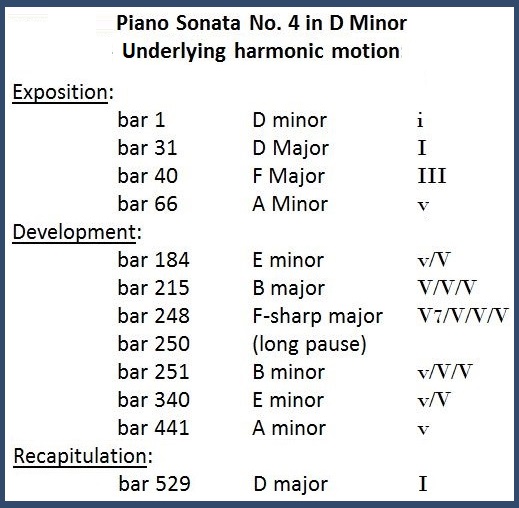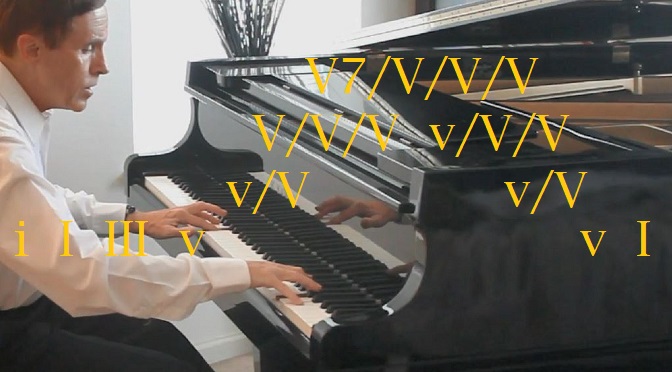Harmonic Motion in Piano Sonata No. 4
In the archetypical classical sonata-allegro movement, the exposition moves from tonic to dominant (often via the mediant). The development is harmonically adventurous but can be thought of as a prolongation of the dominant. The polarity between tonic and dominant polarity is resolved in the recapitulation, where all the themes center around the tonic. Therefore the basic harmonic motion is I-V-I (or i-V-i for minor), i. e., an ascending fifth followed by a descending fifth.
My Piano Sonata No. 4 is a single-movement work, in which the harmonic motion expands this familiar scheme.

In the exposition, the motion proceeds as usual from tonic through the mediant to the dominant, except that the minor version (parallel minor) of the dominant is substituted.
The development, however, is unusual: The ascending motion through the circle of fifths continues all the way to a dramatic F-sharp seventh chord (V7/V/V/V), which is followed by a break. The motion then descends back through the circle of fifths, reaching the tonic at the beginning of the recapitulation.

